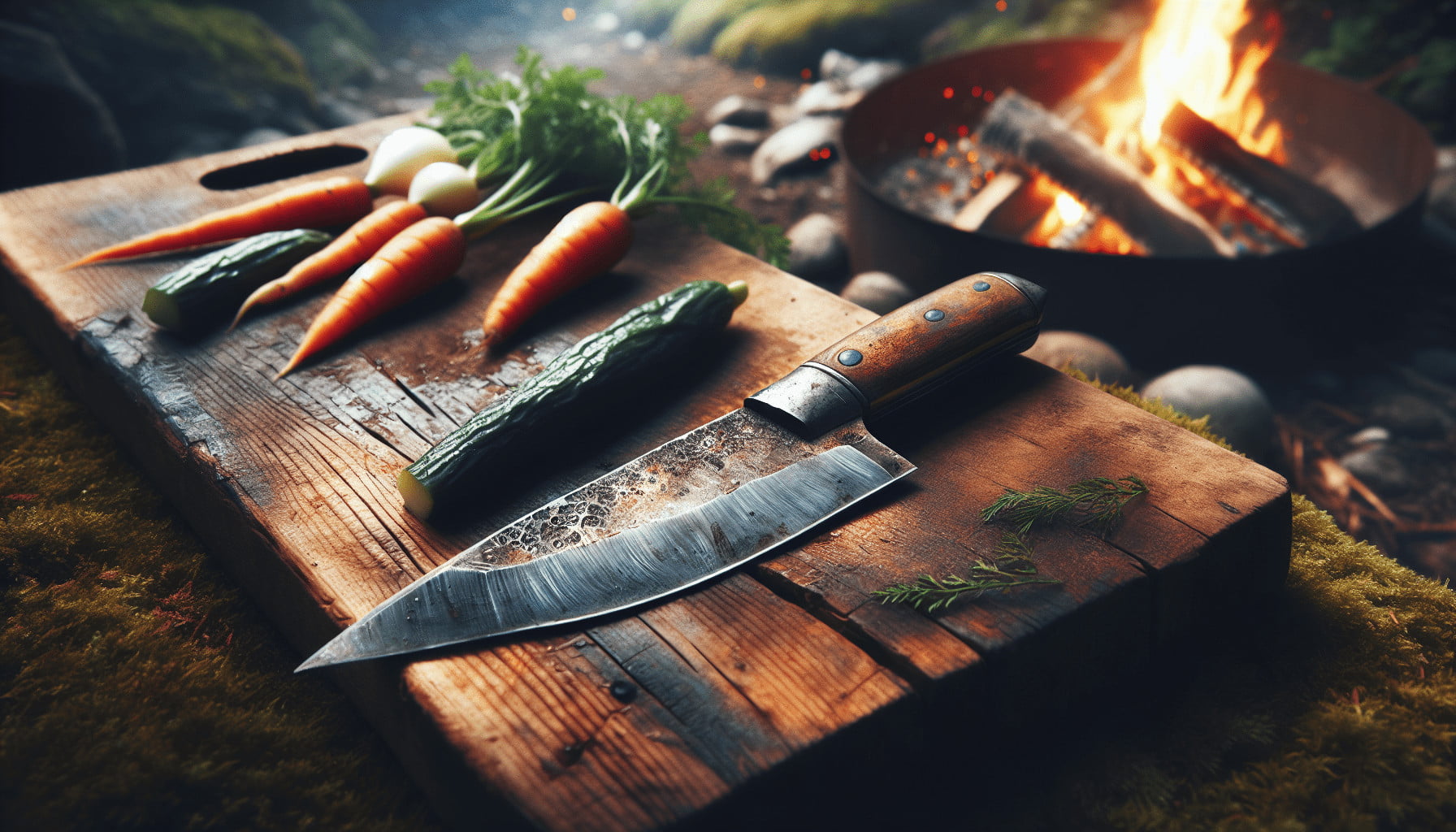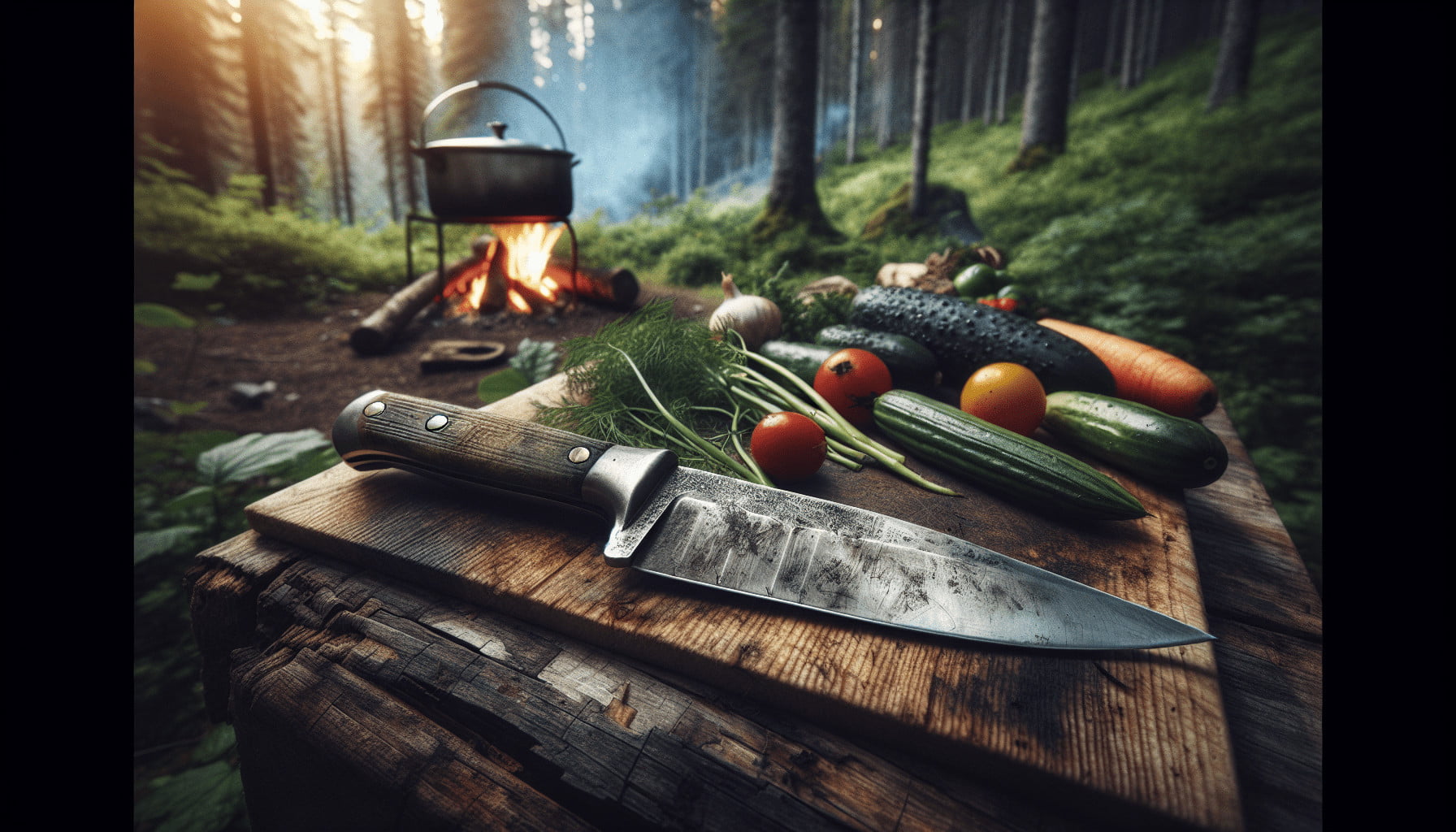Ever been out in the wild, feeling that primal connection to nature, only to find yourself struggling to master the most basic of tasks—like prepping dinner by the campfire? The thought of wielding a knife might seem overwhelming, especially in the rustic setting of the great outdoors. But fear not! Cutting up ingredients effectively and efficiently can completely transform your campfire cooking experience. Let’s bring out your inner chef and ensure your meals are prepped with finesse, regardless of how deep into the woods you are.

The Importance of Knife Skills
Understanding the fundamental techniques of knife usage isn’t just for top chefs. When it comes to campfire cooking, being proficient with a knife can save you time, reduce waste, and most importantly, keep you safe. Imagine spending less time prepping and more time enjoying the crackling fire and stunning starry sky. Your campfire tales will become even better when your food reflects your prowess with a blade.
Safety First
Before you juggle tomatoes, let’s talk safety. Proper knife use is intrinsically tied to safety. A sharp, well-maintained knife is less likely to slip compared to a dull one, minimizing the risk of accidental cuts.
Basic Safety Tips:
- Keep Knives Sharp: A sharp knife requires less force, decreasing the chance of slipping.
- Use a Stable Surface: Always cut on a stable, flat surface to prevent accidents.
- Proper Grip: Hold the knife handle securely and use the bear claw grip to keep your fingers safe.
- Maintenance: Regularly clean and store your knives properly to prevent corrosion and damage.
Types of Knives for Campfire Cooking
Not all knives are created equal, and knowing which one to use for the task at hand can make all the difference. Here are some essential knives to consider adding to your campfire cooking toolkit.
The Chef’s Knife
This versatile tool can handle most of your slicing, dicing, and chopping needs. With its broad blade, it’s great for preparing vegetables, meat, and herbs.
Paring Knife
For more delicate tasks such as peeling fruits or deveining shrimp, the paring knife is your go-to. It’s smaller and more maneuverable, allowing for precision work.
Serrated Knife
From slicing bread to cutting through tomatoes, a serrated knife is designed to saw through foods without squashing them. This function is particularly convenient for food with tough exteriors and soft interiors.
Utility Knife
The utility knife covers the middle ground between a paring knife and a chef’s knife. It’s great for tasks that are too big for a paring knife but too small for a chef’s knife.
| Knife Type | Best For | Characteristics |
|---|---|---|
| Chef’s Knife | General slicing, dicing, chopping | Broad blade, versatile |
| Paring Knife | Peeling, precision tasks | Small, maneuverable |
| Serrated Knife | Bread, tomatoes | Saw-like blade |
| Utility Knife | Medium-sized tasks | Between paring and chef’s knife |
Basic Knife Techniques
Knowing how to properly use each type of knife can greatly improve your efficiency and safety. Here are some fundamental techniques to boost your campfire cooking skills.
The Slice
The slice is a straightforward technique used for a wide range of foods. With a smooth, even motion, you can easily chop vegetables and meats into uniform pieces. Remember to let the sharpness of the knife do the work; avoid using excessive force.
The Chop
Often confused with slicing, chopping involves a more forceful downwards motion. This method is ideal for cutting through denser ingredients, such as root vegetables or bones.
The Rock Chop
Used primarily for herbs and leafy greens, the rock chop involves using a rocking motion with your knife. Place the tip of the blade on the cutting board and rock forward and backward through the herbs, keeping the blade’s tip stationary.
The Julienne
For evenly sized matchsticks, the julienne technique produces thin, uniform strips. This technique is great for salads and garnishes and will make your campfire meals look restaurant-quality.
The Dice
Dicing involves cutting food into small, even cubes. This is especially useful for cooking items that should be uniformly sized to ensure even cooking. Start by slicing the food into planks, then into sticks, and finally into cubes.
Maintaining Your Knives
Optimal knife performance doesn’t end with just knowing how to use them; you must also care for them properly. Here’s how you can keep them in prime condition, even in the great outdoors.
Cleaning
Always clean your knives immediately after use with warm soapy water. Never leave them soaking, as this can cause corrosion over time. Dry them thoroughly to prevent rust.
Sharpening
A dull knife is a dangerous knife. Regularly sharpening your blades will ensure they remain efficient and safe. You can use a whetstone, sharpening rod, or a portable sharpener. Always follow the manufacturer’s guidelines for the best results.
Storing
Improper storage can dull knives quickly. Use a knife roll or a protective sheath to keep the blades safe and sharp. Avoid storing knives loosely in drawers or backpacks where they can scrape against other objects.

Using Knives for Prep and Cooking
Now that you’ve got the basics down, let’s apply them to practical campfire cooking scenarios. Here’s how you can use your newfound skills to elevate your campfire culinary adventures.
Prepping Vegetables
One of the fundamentals in campfire cooking is preparing vegetables. A chef’s knife can handle larger veggies like bell peppers and onions with ease, while a paring knife is perfect for more delicate items like mushrooms.
Steps:
- Wash and Dry: Always start with clean vegetables.
- Chop/Slice: Depending on the vegetable and the cooking method, choose the appropriate knife and technique.
- Storage: Use reusable containers or bags to keep your prepped veggies fresh.
Handling Meat
Meat can be trickier than vegetables, but it’s no challenge with the right knife and technique. A chef’s knife is ideal for larger cuts, while a utility knife is perfect for smaller pieces.
Steps:
- Sanitize Work Area: Ensure your workspace is clean.
- Trimming: Remove any excess fat or gristle.
- Cutting: Use even, smooth strokes. For tougher cuts, apply the chop technique.
- Marinating: Consider marinating your meats for added flavor.
Slicing Bread
A serrated knife is ideal for cutting through bread. Its saw-like blade ensures you get clean slices without squishing the bread.
Steps:
- Steady Hand: Hold the bread steady with one hand.
- Saw Motion: Gently saw through the bread without pressing down too hard.
Advanced Knife Techniques
Once you’ve mastered the basics, you might want to try some more advanced techniques to impress your fellow campers.
The Butterfly
Ideal for thicker cuts of meat, butterflying involves slicing the meat horizontally without cutting all the way through. This allows you to open it like a book for even cooking or stuffing.
The Chiffonade
This technique is used for leafy greens or herbs, creating thin ribbons that are perfect for garnishing. Stack the leaves, roll them tightly, and make thin slices.
Filleting
Whether you’ve caught a fresh fish or are working with a fillet you packed, filleting requires precision. Use a thin, flexible fillet knife to slide along the bones, removing them without wasting meat.
Knife Skills in Practice: A Campfire Recipe
Let’s put these skills to the test with a simple but delicious campfire recipe that incorporates multiple knife techniques.
Campfire Ratatouille
Ingredients:
- 1 Eggplant
- 2 Zucchinis
- 1 Bell Pepper
- 1 Onion
- 2 Tomatoes
- 3 Garlic Cloves
- Olive Oil
- Salt and Pepper
- Fresh Basil
Instructions:
-
Prep Vegetables:
- Slice: Use a chef’s knife to slice the eggplant into rounds.
- Chop: Chop the onion and bell pepper.
- Dice: Dice the tomatoes.
- Mince: Mince the garlic cloves with a paring knife.
-
Cook:
- Heat olive oil in a cooking pot or skillet over the campfire.
- Add the onions and garlic first, cooking until translucent.
- Add the eggplant, bell pepper, and zucchini. Stir occasionally.
- Add diced tomatoes and continue cooking until all vegetables are tender.
-
Season:
- Add salt, pepper, and fresh basil to taste.
-
Serve:
- Serve hot as a side dish or main entree.
Troubleshooting Common Knife Problems
Even with the best intentions, things can go awry. Here are some common issues and how to solve them.
Knife Not Cutting Well
If your knife isn’t cutting well, it’s probably dull. Try sharpening it with a whetstone or portable sharpener. Ensure you’re maintaining the correct angle to avoid further dulling.
Food Sticking to the Knife
This can be frustrating and slow down your prep work. To reduce sticking, try these quick tips:
- Wet Knife: Dip your knife in water before cutting sticky foods.
- Rubbing Oil: Use a small amount of oil on the blade.
- Proper Technique: Use a smoother motion to avoid crushing the food against the knife.
Uneven Cuts
Consistent practice and muscle memory are critical here. Make sure your grip is firm and your cutting board is stable. Practice making even cuts on less critical ingredients until you improve.
Conclusion
Mastering knife skills for campfire cooking isn’t just about improving your culinary prowess; it’s also about enhancing your overall outdoor experience. The satisfaction of preparing a delicious meal from scratch, under the stars, around a flickering fire, is second to none. By investing a little time in learning these essential knife skills, you’ll not only become more self-sufficient but also turn every campfire meal into a gourmet adventure. So next time you head out, bring along your trusted knives and these tips, and let the wilderness be your kitchen.
